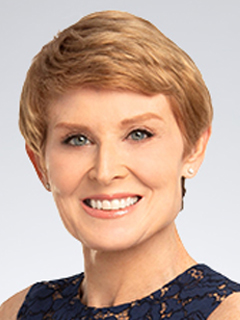Headlines mask weakness and inflation surge
Brace for fireworks.

July 30, 2025
Real GDP rebounded at a 3% annual pace in the second quarter after contracting by 0.5% in the first quarter. That translates to 1.3% average growth in the first half of the year, less than half of the 2.8% average in the second half of 2024.
Tariffs threats whipsawed the GDP figures. A massive front-running cycle buoyed imports and boosted inventories in the first quarter, while the aftershock caused a sharp drop in imports and inventories in the second quarter. The trade deficit alone shaved 4.6% from overall growth in the first quarter and added back 5% in the second. Inventories ballooned in the first quarter only to be drained in the second.
Private domestic spending, which includes consumer spending and residential and nonresidential investment, was more muted. It rose by only 1.1% in the second quarter, weaker than the 1.6% gain of the first and well below the 2.8% average of the second half of 2024. That suggests that underlying demand slowed in the first half of the year.
Consumer spending rose by a tepid 1.4%, a pickup from 0.5% in the first quarter. Spending on goods and services picked up slightly, helped by gains in vehicle sales at the start of the quarter. Spending on nondurable goods was the weakest since the first quarter of 2024, when they lost ground. Spending on services was buoyed by spending on healthcare, which is supported by the aging of the baby boom into retirement.
Housing activity contracted for the second consecutive quarter, with sales and starts falling amidst escalating monthly costs and souring consumer attitudes. Cancelations are up, along with delinquencies in some of the most affluent areas, reflecting a rise in delinquencies due in part to persistently high mortgage rates.
Many signed on to higher mortgage rates in hopes of refinancing soon after. That has not occurred, while the costs of homeownership have soared. Home values in some parts of the country have begun to fall, which will help with inflation but not enough to make housing “affordable.” Some of the largest hurdles are now the level of prices relative to incomes along with staggering insurance costs and real estate taxes. Weather-related disasters and a pickup in repair materials boosted by tariffs will further stoke insurance premiums but with a lag.
Business investment contracted with investment in new equipment falling after a jump in the first quarter, which included some front-running of tariffs. Investment in nonresidential structures contracted. The outliers remain data warehousing centers and infrastructure spending needed to scale AI models. That is on a tear. There appears to be some front-running of spending on semiconductors; new tariffs are expected any day due to national security concerns. That is boosting the cost of the buildout of data centers along with steel and aluminum tariffs.
Government spending essentially moved sideways with a rise in spending by state and local governments more than offsetting a drop in spending at the federal level. The largest losses at the federal level occurred in nondefense discretionary spending, where some grants and federal outlays have been stopped despite approval by Congress. Defense spending picked up.
A June bump in inflation
Overall inflation cooled in the second quarter. However, today’s data provide us with a preview of what to expect from the personal income and outlays report, which includes the Federal Reserve’s preferred measure of inflation, the personal consumption and expenditures (PCE) deflator. That makes it particularly timely as the Fed will announce its decision on rate cuts today. A rise in goods prices more than offset a cooling of service sector prices, notably linked to shelter costs and travel and tourism.
The PCE index looks like it rose by 0.5% in June in both the overall and the core indices, well above market expectations for a rise of 0.3%. That is up from 0.1% and 0.2%, respectively in May, although we may see revisions that shift those gains around a bit with the final PCE number tomorrow. More importantly, the PCE index, which the Fed targets, was up 2.7% from a year ago in June, a sharp acceleration from 2.3% in May, and well above the trough of 2.1% in September 2024.
The preliminary cut of the core PCE, which excludes food and energy and tends to be a betting indicator of where inflation is going, rose an implied 2.9% from a year ago in June, an acceleration from the 2.7% pace of May. The core PCE hit a low of 2.6% in April. The data comes on the heels of a better-than-expected report on employment by ADP, although that is not necessarily a precursor to gains in the official employment data for the month. The gains were broad-based in both the goods and service sectors, which could portend some contagion in inflation from the goods to the service sector.
The data are unwelcome news for the Fed as they suggest that we are seeing more of the inflationary effects of tariffs than previously thought. It takes anywhere from six to eighteen months for tariffs to work their way through the economy, which suggests that the bulk of the boost to inflation from tariffs is ahead of us. A whole new set of tariffs is scheduled to go into effect on August 1.
The effective tariff rate has been mitigated by pauses and the use of bonded warehouses in what are known as Free Trade Zones (FTZs). Those enable firms to store imports without paying tariffs until they leave the FTZ. Firms are tapping those inventories now that tariffs are slated to rise further on August 1; the goal is to pay lower pre-August 1 tariff rates.
The data will keep most of the Fed firmly on the sidelines at its meeting today. Fed Chairman Jay Powell is not likely to signal a rate cut for September. That will have to wait for his Jackson Hole Symposium speech in August. Even then, we may not have the data needed to open the door to rate cuts.
A dissent? Governors Christopher Waller and Michelle Bowman are poised to dissent today as they see the threat to the labor market associated with tariffs as greater than the threat of inflation. That argument is less convincing in light of today’s data, but Waller has telegraphed his intent to dissent. A reversal today would be a surprise to financial markets.
The data will keep most of the Fed firmly on the sidelines at its meeting today.

Diane Swonk
KPMG Chief Economist
Bottom Line
Distortions due to tariffs whipsawed growth in the first half of the year but underlying demand has weakened. This is at the same time that tariffs are beginning the work their way into inflation. The step-up in June appears to be quite large; that is prior to the full effect of tariffs being felt and the new, higher tariffs scheduled to go into effect on Friday. Those shifts will keep the Fed sidelined in July, despite key dissents on the Board of Governors. Brace for fireworks.
Explore more

Economy trips on tariff uncertainty in first quarter
Data suggest that inflation was stickier ahead of tariffs than previously thought.

KPMG Economics
A source for unbiased economic intelligence to help improve strategic decision-making.

Insights from the Emerald Isle: On tour with economists abroad
Other economies are strengthening trade ties between them, leaving the US behind.
Subscribe to insights from KPMG Economics
KPMG Economics distributes a wide selection of insight and analysis to help businesses make informed decisions.
Meet our team
